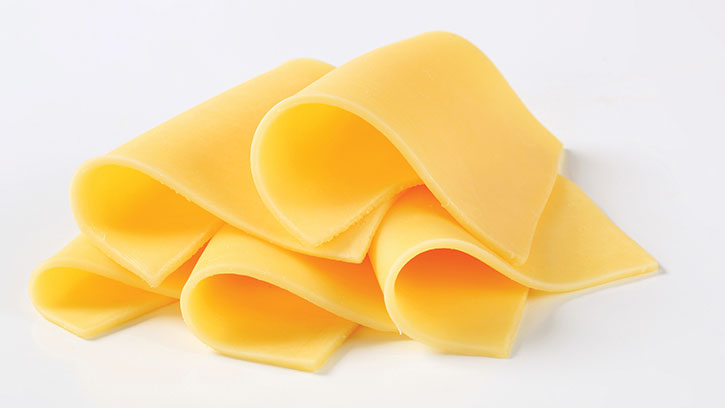Reverse Engineering a Cheese Alternative
Science Forward | RESEARCH
Creating a palate-pleasing vegan cheese is no easy feat. Many cheese analogues come up short in terms of flavor, mouthfeel, and nutrition.
In dairy-based cheese, bacteria transform the nutrients in milk into volatile compounds, which is why cheese has delicious, complex flavors—and why Gouda tastes like Gouda and Parmesan tastes like Parmesan, explains Carmen Masiá, a PhD candidate at the University of Copenhagen.
Masiá and her colleagues in the Department of Food Science at the university are exploring the use of fermentation in the development of texture and flavor in a plant-based cheese. As part of her doctoral thesis research, Masiá designed a functional, stable matrix that forms a gel once it’s fermented, a process she says is “a little bit of reverse engineering.” Her work builds off earlier research she conducted on fermented plant-based products.
“The whole idea is that if we understand the metabolism of these bacteria, and we also understand the nature of the raw material that we’re using, we can probably produce those flavors as well,” Masiá says.
The researchers created a simple mixture of pea protein, oil, and water and heat treated it. Bacteria were then added to trigger fermentation.
It’s important for the matrix to be correctly homogenized in this process so that there is no separation during fermentation; proteins are heavy and will sediment if not properly homogenized. Because the bacteria lower the pH of the mixture, the proteins aggregate and form the gel, which is close to what happens during dairy cheese production, Masiá explains.
The researchers found that the optimal mix for a semi-hard cheese duplicate was 10% fat and 10% plant protein. While they were able to create sliceable gels with all levels of fat, more liquid fat created weaker gels; 10% fat produced the mouthfeel they were after.
This matrix shows that the protein can do the work of building the gel without using texturizing agents, Masiá says. “It’s possible to get to the final results by just benefiting from the raw material when we use fermentation,” she notes.
Masiá chose pea protein because it’s local, sustainable, and has a good nutritional profile, although its earthy notes require flavor masking. She opted to work with olive oil because of its nutritional value, but it has a strong flavor profile, so the research team is exploring the use of other, more neutral-tasting oils, such as sunflower oil.
Finding a Better Way
Many of the plant-based cheeses currently available are made using a base of coconut oil because it’s inexpensive, according to Masiá. But she says they’re essentially blocks of solid fats, with no protein, one of cheese’s main nutrients.
The doctoral student hopes to see more food companies partnering with researchers to create nutritious plant-based products rather than rushing to market with products that are less than optimal. “They’re making a product that resembles cheese, but it’s actually not giving the same experience,” she says.
“I think we have to go one step backward and try to understand the science,” Masiá reflects. “How are these proteins behaving? And how can we make them behave in a way that they build texture, microstructure, and also flavor profile? I think fermentation is a really strong tool to do that.”
Plant-based foods are here to stay, she predicts. But vegan cheese won’t satisfy mainstream consumers unless it can deliver on the attributes of dairy-based products.
“A product can be super sustainable, it can be cheap, it can be healthy,” says Masiá. “But if it doesn’t taste good, if it doesn’t give a nice sensorial experience, consumers are not going to choose it.”


